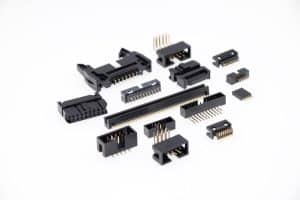The Evolution of Crash Testing: Virtual Impact Analysis
Crash testing has been an integral part of vehicle safety for over a century. It involves purposely crashing a vehicle to analyze its structural integrity and safety features. However, traditional crash testing methods are expensive, time-consuming, and often limited in their ability to accurately simulate real-world scenarios. With advancements in technology, virtual impact analysis has emerged as a more efficient and comprehensive approach to crash testing. In this article, we will explore the evolution of crash testing and the growing importance of virtual impact analysis in the automotive industry. 
The Beginnings of Crash Testing
Crash testing was first introduced in the late 19th century, with the first documented crash test taking place in 1899. At the time, horse-drawn carriages were the primary mode of transportation, and there was a growing concern over their safety. To address this, carriages were deliberately crashed into obstacles such as trees or walls to determine their crashworthiness.
The Rise of Automobiles and Traditional Crash Testing
As the automobile industry grew, so did the need for better safety measures. In the 1930s, General Motors began conducting controlled crash tests on their vehicles. These tests involved driving a car into a stationary object, such as a wall, at a predetermined speed to assess its structural integrity.
In the 1950s, the National Safety Council created the first standardized crash test procedures, and the Society of Automotive Engineers (SAE) established the first testing guidelines. These developments paved the way for more accurate and controlled crash testing methods.
The Limitations of Traditional Crash Testing
While traditional crash testing has been a crucial tool for evaluating vehicle safety, it has its limitations. One of the main drawbacks is the inability to accurately simulate real-world scenarios. For example, traditional crash tests are conducted at fixed speeds and angles, which may not reflect the various conditions of an actual crash. Thus, the results may not accurately represent the impact of a real-life collision.
Moreover, traditional crash tests are expensive and time-consuming. Each test requires a physical vehicle, a controlled environment, and specialized equipment, making it an expensive and time-intensive process. This limits the number of tests that can be conducted, hindering the ability to gather comprehensive data.
The Emergence of Virtual Impact Analysis
As technology advanced, so did the methods of crash testing. Virtual impact analysis uses computer simulations to model and predict vehicle impact in a controlled virtual environment. The process involves creating a digital map of the vehicle and its components, replicating crash scenarios, and analyzing the impact on the vehicle’s structure and safety features.
Virtual impact analysis allows for a more extensive range of tests and scenarios to be conducted, providing a more accurate representation of crash dynamics. It also reduces the need for physical vehicles and testing equipment, making it a cost-effective option.
The Benefits of Virtual Impact Analysis
Virtual impact analysis offers several benefits over traditional crash testing, including:
Cost-Efficiency:
Virtual impact analysis eliminates the need for expensive physical tests, reducing testing costs significantly.
Time-Efficiency:
With virtual impact analysis, multiple tests can be conducted simultaneously, reducing the time required to gather data.
Realistic Simulation:
Virtual impact analysis allows for more realistic simulation of various crash scenarios, providing a more accurate representation of real-world collisions.
Data Analysis:
Virtual impact analysis enables faster and more comprehensive data analysis, allowing for quicker identification of potential safety issues.
The Future of Crash Testing
As technology continues to evolve, so will the methods of crash testing. Virtual impact analysis is already becoming a standard practice in the automotive industry, and it is only expected to grow in importance. With the rise of autonomous vehicles, virtual impact analysis will play a critical role in evaluating the safety of these vehicles.
In Conclusion
Crash testing has come a long way since its beginnings over a century ago. Traditional crash testing has been an essential tool in the evaluation of vehicle safety, but virtual impact analysis offers a more efficient and comprehensive approach. As technology continues to advance, virtual impact analysis will continue to evolve and enhance the safety of vehicles on the road.









